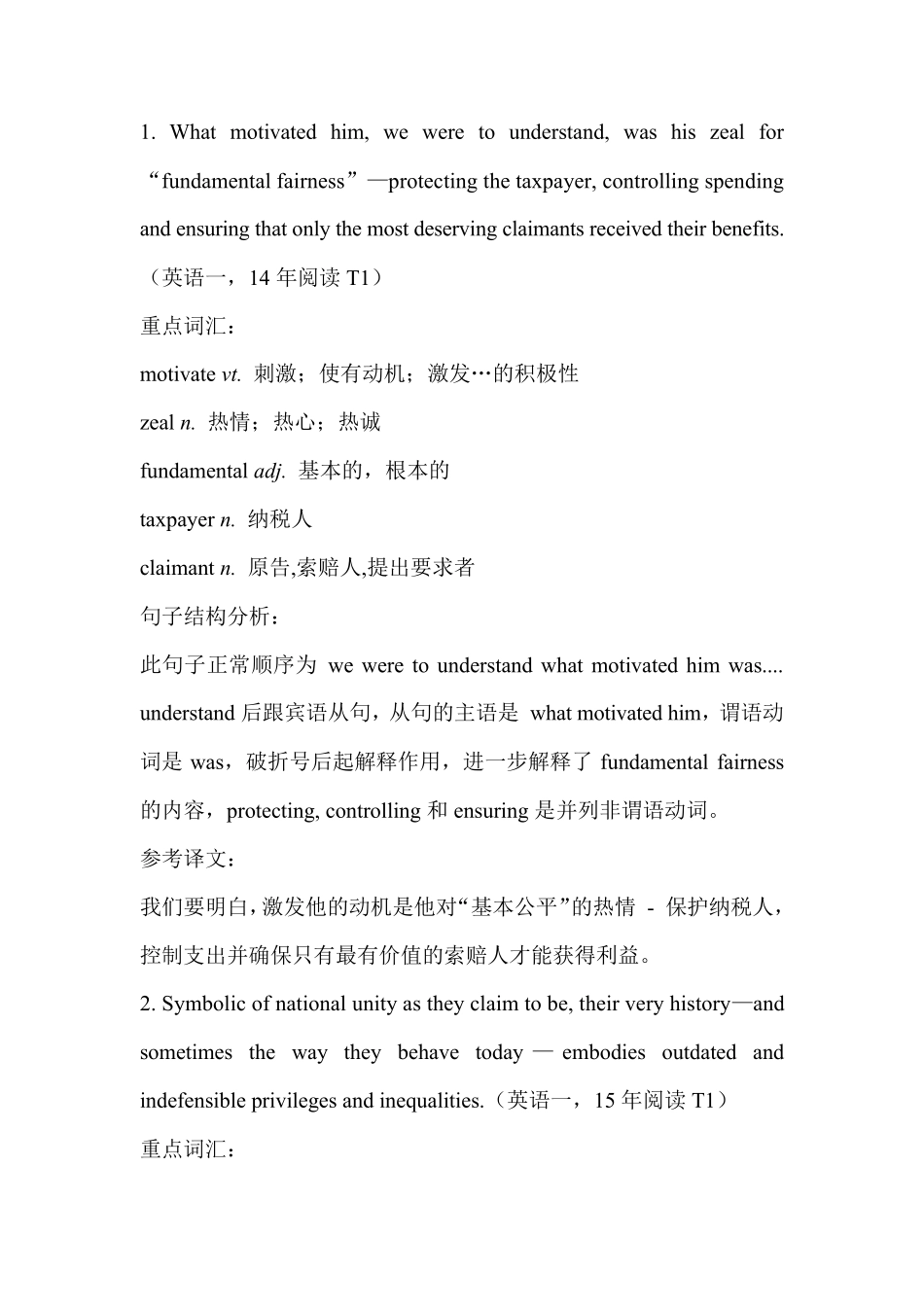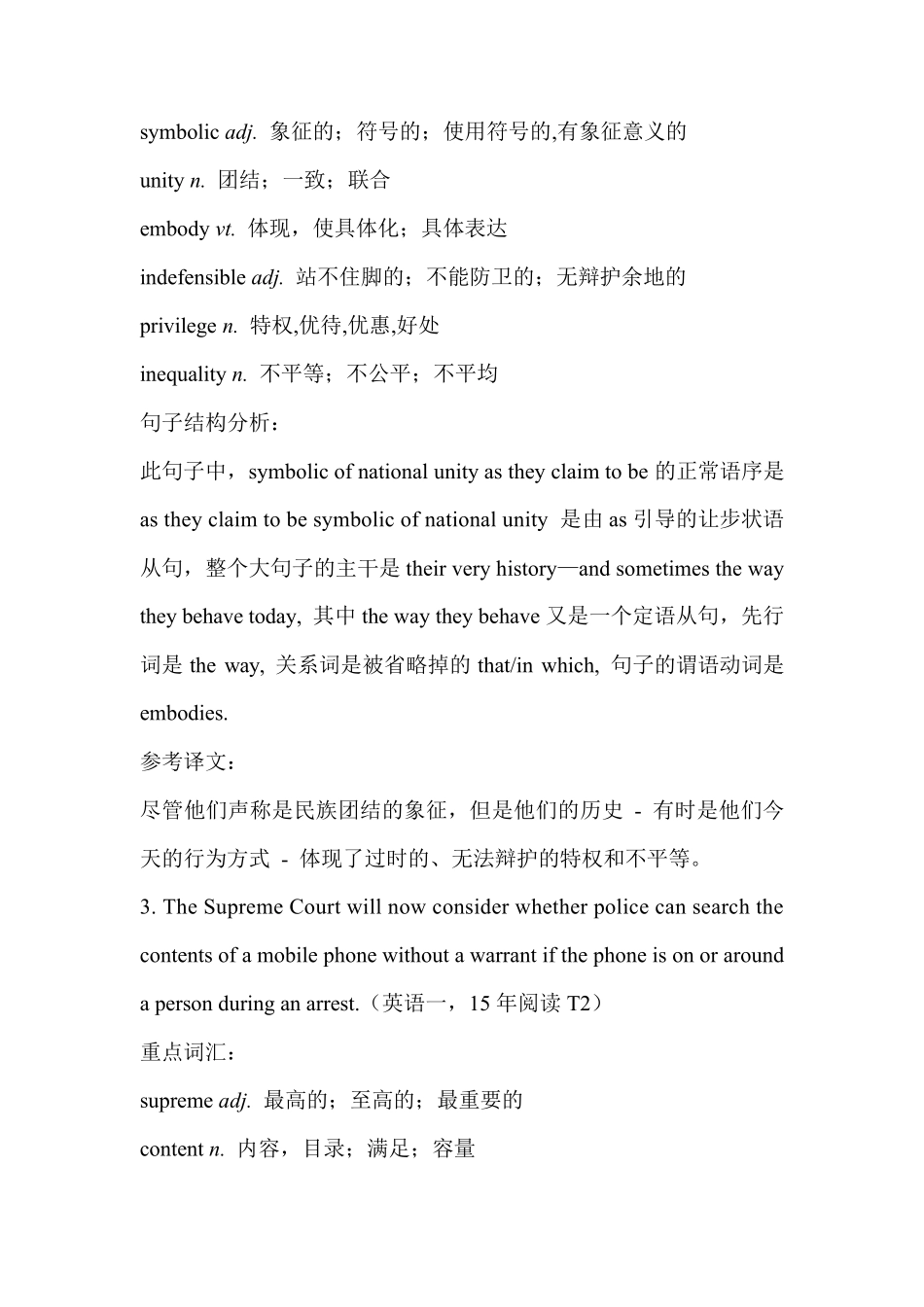1. What motivated him, we were to understand, was his zeal for “fundamental fairness”—protecting the taxpayer, controlling spending and ensuring that only the most deserving claimants received their benefits.(英语一,14 年阅读 T1) 重点词汇: motivate v t. 刺激;使有动机;激发…的积极性 zeal n. 热情;热心;热诚 fundamental adj. 基本的,根本的 taxpayer n. 纳税人 claimant n. 原告,索赔人,提出要求者 句子结构分析: 此句子正常顺序为 we were to understand what motivated him was.... understand 后跟宾语从句,从句的主语是 what motivated him,谓语动词是 was,破折号后起解释作用,进一步解释了 fundamental fairness的内容,protecting, controlling 和 ensuring 是并列非谓语动词。 参考译文: 我们要明白,激发他的动机是他对“基本公平”的热情 - 保护纳税人,控制支出并确保只有最有价值的索赔人才能获得利益。 2. Symbolic of national unity as they claim to be, their very history—and sometimes the way they behave today — embodies outdated and indefensible privileges and inequalities.(英语一,15 年阅读 T1) 重点词汇: symbolic adj. 象征的;符号的;使用符号的,有象征意义的 unity n. 团结;一致;联合 embody v t. 体现,使具体化;具体表达 indefensible adj. 站不住脚的;不能防卫的;无辩护余地的 privilege n. 特权,优待,优惠,好处 inequality n. 不平等;不公平;不平均 句子结构分析: 此句子中,symbolic of national unity as they claim to be 的正常语序是as they claim to be symbolic of national unity 是由as 引导的让步状语从句,整个大句子的主干是their very history—and sometimes the way they behave today, 其中the way they behave 又是一个定语从句,先行词是the way, 关系词是被省略掉的that/in which, 句子的谓语动词是embodies. 参考译文: 尽管他们声称是民族团结的象征,但是他们的历史 - 有时是他们今天的行为方式 - 体现了过时的、无法辩护的特权和不平等。 3. The Supreme Court will now consider whether police can search the contents of a m...


